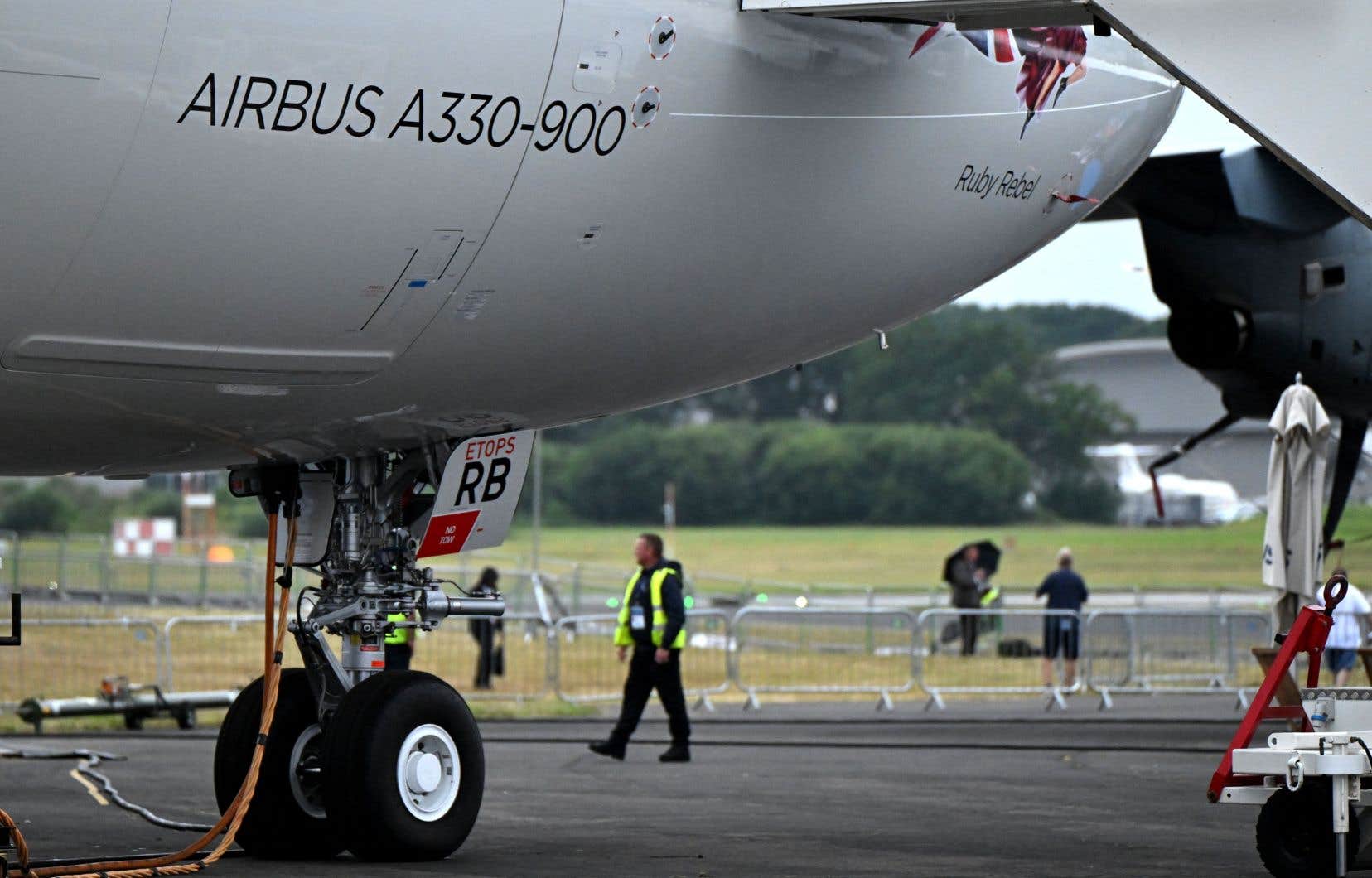The orders announced at the Farnborough Airshow are concentrated in the wide-body market, reflecting the recovery in global long-haul traffic and airlines’ concern to anticipate their future needs.
On Tuesday, the second day of the show, which is being held southwest of London, Airbus started the clock on its A330 and A350 aircraft, which can carry 300 or more passengers over 13,000 kilometres.
British airline Virgin Atlantic has signed a firm order for seven additional A330-900 long-haul aircraft, bringing to 19 the number of such aircraft in the order book of the company founded by billionaire Richard Branson 40 years ago.
According to the latest list price revealed in 2018 by Airbus, which has not communicated on its developments since then, the price of an A330-900 amounts to 296 million dollars.
The Japanese company Japan Airlines has formalized the purchase of 21 A350-900s, including one to replace the aircraft lost in a ground collision at the beginning of January at Tokyo-Haneda airport, and 11 single-aisle A321s.
Japan Airlines (JAL) plans to operate the new A350s, which will be delivered between 2028 and 2032, on international routes. The airline has so far used its 15 A350-900s on domestic routes, taking advantage of its capacity to carry up to 350 passengers.
The day before, the Japanese carrier had also formalized the purchase, also revealed in March, of 10 Boeing 787 Dreamliners.
At list prices, the order from the two aircraft manufacturers is worth $12.9 billion, according to JAL.
Also on Monday, Korean Air signed an order with Boeing in front of the media for 20 777-9 wide-body jets, which have yet to obtain certification, and 20 787-10 Dreamliners (more than $15 billion at list prices).
The A320 and B737 single-aisle aircraft form the core of the air transport market and are well covered by a few contracts: Airbus has signed for two A320s and two A321 XLRs ordered by Drukair, a Bhutanese company, while Boeing has obtained an order for two 737 MAX-10s from the Luxembourg company Luxair.
Constrained production capacities
But with manufacturers’ order books full until the end of the decade for single-aisle aircraft and with production capacity constraints delaying deliveries, the world’s airlines are looking to position themselves quickly to receive the long-haul aircraft they will need.
The movement is underway: over the first six months of the year, the share of wide-body aircraft in Airbus orders has doubled, representing 40% of the aircraft purchased by the European aircraft manufacturer’s customers (27 A330s and 103 A350s).
For Boeing, traditionally the most powerful aircraft manufacturer in this segment, they totaled 35% of total orders (42 B777 and 13 B787).
Although it has restarted more slowly than medium-haul routes, long-haul traffic should return to its pre-COVID-19 pandemic level this year.
Between the prospect of global air traffic that is expected to double over the next 20 years and the need for airlines to replace their fleets with aircraft that consume less fuel — and are therefore more profitable — and emit less CO2the needs are immense.
Airbus estimates the need for wide-body aircraft at 8,900, including 940 dedicated to freight, by 2043, or 20% of the total number of aircraft to be delivered, while Boeing estimates it at more than 9,000.
And while the arrival of the A321 XLR, a very long-range single-aisle aircraft of which nearly 550 have already been sold, could reshuffle airlines’ strategies, wide-body aircraft are not going to disappear from the market, believes Darren Hulst, Boeing’s vice-president of marketing.
“About 25% of long-haul seats are still on aircraft with 330 seats or more, which means we need an effective replacement for long-haul aircraft,” he says, noting that these large markets are not going to disappear anytime soon.
